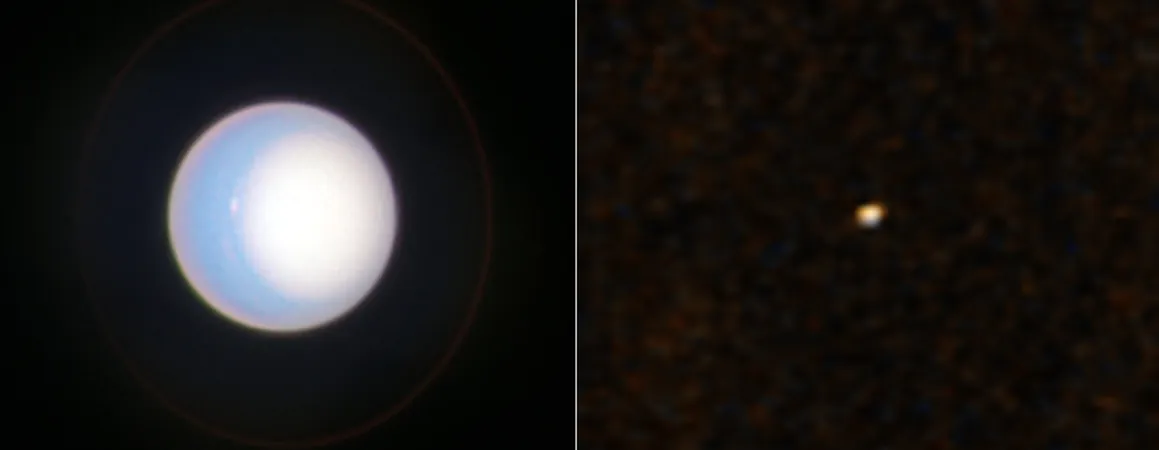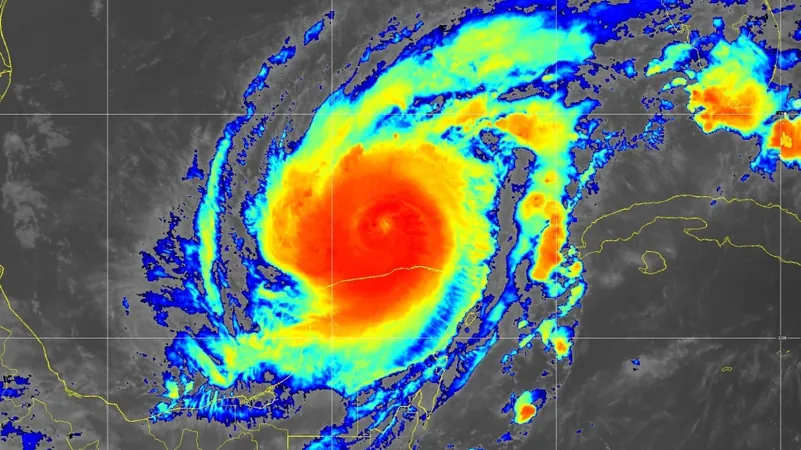
Hubble and New Horizons: Unraveling the Secrets of Uranus to Aid Exoplanet Exploration
2024-10-09
Author: Liam
Hubble and New Horizons: Unraveling the Secrets of Uranus to Aid Exoplanet Exploration
In a groundbreaking collaborative effort, NASA's Hubble Space Telescope and the New Horizons spacecraft have turned their sights toward Uranus, capturing simultaneous observations that offer unprecedented insights into the planet. These observations are set to revolutionize our understanding of exoplanets and refine our future explorations beyond our solar system.
A Dual Perspective
Astronomers leveraged Uranus as a proxy to study similar types of gas giants that orbit other stars. By contrasting the high-resolution images from Hubble with the distant views captured by New Horizons, scientists are gaining valuable data expected to inform future missions targeting exoplanets. This dual perspective is instrumental in preparing for the challenges of capturing images of far-off worlds.
Lead author Samantha Hasler from MIT shared a surprising finding: “We found that Uranus was actually dimmer than predicted in the New Horizons data taken from a different viewpoint.” This unexpected result opens new avenues for understanding how gas giants reflect light, which is crucial for any assessment of habitability on exoplanets.
The Challenge of Imaging Exoplanets
Capturing images of exoplanets is notoriously daunting due to their vast distances from Earth; most appear as mere pinpoints of light. However, by utilizing techniques like direct imaging and spectroscopy, astronomers can analyze the light emitted and reflected by these distant worlds. The ability to examine a planet during its "partial phase," when only sections are illuminated by their stars, adds even more complexity to the process.
What Uranus Reveals
Uranus serves as an ideal model for exoplanet studies due to its similarities to many known gas giants. The New Horizons spacecraft was positioned 6.5 billion miles away from Uranus, capturing twilight views of the planet that are inaccessible from Earth. In contrast, Hubble, orbiting at about 1.7 billion miles, was able to discern intricate atmospheric features, such as clouds and storms on the sunlit side of Uranus.
Hasler noted, "Uranus appears as just a small dot on New Horizons observations, similar to dots observed from the Webb Space Telescope or ground-based observatories." The comparative analysis from Hubble provides crucial insight into the planet’s atmospheric dynamics that can inform exoplanet observations.
Atmospheric Dynamics and Future Missions
Both telescopes observed remarkable consistency in brightness despite Uranus rotating. This consistency suggests that the cloud features on the planet's atmosphere remained static, a revelation that raises questions about how common such atmospheric stability may be among exoplanets.
Crucially, New Horizons’ data adds a layer of understanding regarding how atmospheres reflect light under different phases, indicating that exoplanets may appear dimmer than previously anticipated during their partial phases. This revelation could significantly impact how scientists interpret light from distant planets.
To advance our explorations of exoplanet atmospheres and potential habitability, NASA is working on two major observatories. The Nancy Grace Roman Space Telescope, expected to launch by 2027, will use advanced coronagraphic techniques to isolate the light from gas giant exoplanets. Meanwhile, the Habitable Worlds Observatory is in early planning stages and aims to hunt for biosignatures on Earth-sized planets.
Conclusion: A New Dawn for Exoplanet Research
"Studying how known benchmarks like Uranus appear in distant imaging can help us have more robust expectations when preparing for these future missions," concluded Hasler. The observations made through Hubble and New Horizons contribute significantly to the mission's ever-expanding wealth of scientific knowledge, shedding light on the uncharted territories of both our solar system and exoplanets beyond.
With New Horizons continuing its extended mission, exploring distant Kuiper Belt objects and contributing to our understanding of the outer solar system, scientists remain hopeful that future studies will unveil more mysteries about our universe. As we stand on the brink of new discoveries, Uranus is poised to play a pivotal role in guiding the way forward in the search for life beyond Earth.









 Brasil (PT)
Brasil (PT)
 Canada (EN)
Canada (EN)
 Chile (ES)
Chile (ES)
 España (ES)
España (ES)
 France (FR)
France (FR)
 Hong Kong (EN)
Hong Kong (EN)
 Italia (IT)
Italia (IT)
 日本 (JA)
日本 (JA)
 Magyarország (HU)
Magyarország (HU)
 Norge (NO)
Norge (NO)
 Polska (PL)
Polska (PL)
 Schweiz (DE)
Schweiz (DE)
 Singapore (EN)
Singapore (EN)
 Sverige (SV)
Sverige (SV)
 Suomi (FI)
Suomi (FI)
 Türkiye (TR)
Türkiye (TR)